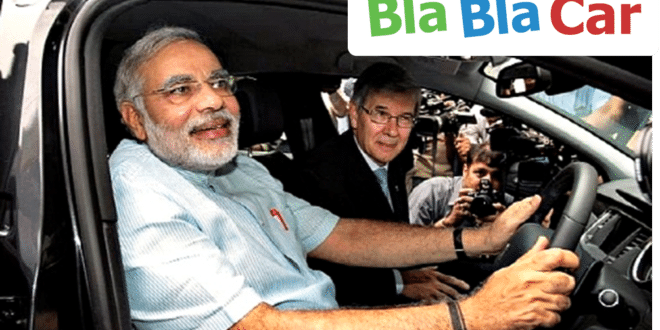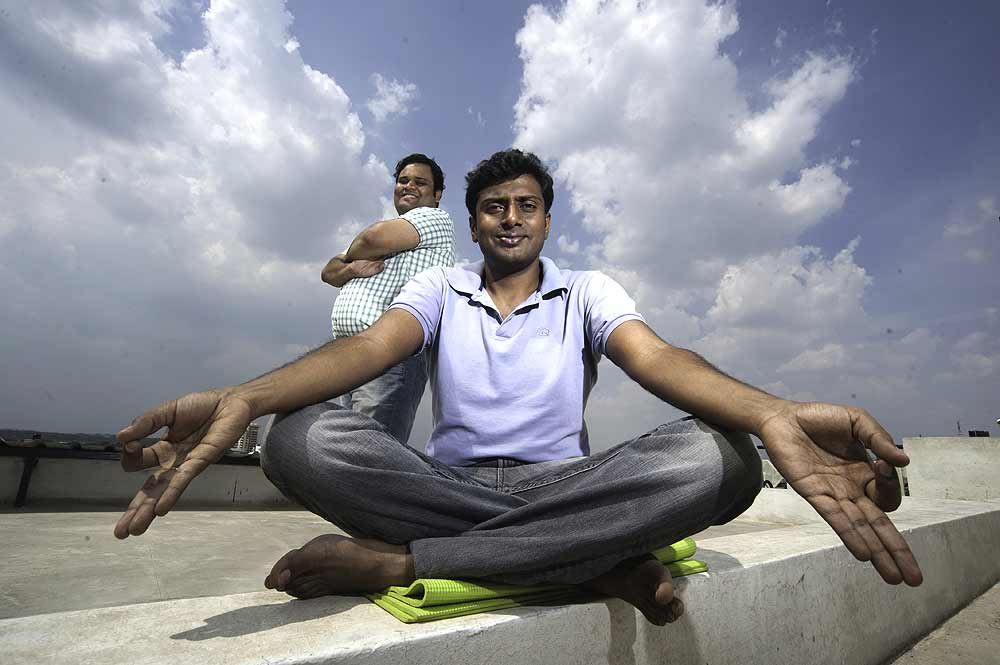L’Inde, le nouveau pays de la voiture
Au pays de Tata (qui a récemment racheté Jaguar et Land rover), la première voiture roulait déjà en 1897. Aujourd’hui il y a près de 40 millions de voitures, 71 000 km d’autoroutes et des experts des transports comme N. Ranganathan prévoient jusqu’à « 450 millions de véhicules sur les routes indiennes d’ici 2020« . Je vis à Chennai qui concentre à elle seule 35 à 40% de l’industrie automobile indienne, ce qui en fait la “Détroit d’Asie” mais Chennai, elle, a le vent en poupe puisque la ville devrait devenir le premier hub de production automobile au monde d’ici 2 ans avec une capacité de production de près de 3 millions de voitures par an. D’ailleurs, Michelin et Renault sont bien implantés ici. Bref, l’Inde a et aura de plus en plus la matière première essentielle au covoiturage : des voitures et des routes. De plus, pour reprendre l’argument de Frédéric Mazzella démontrant la moindre pertinence du covoiturage aux USA dûs aux coûts pas assez élevés de l’essence, de la voiture et des assurances automobiles sur le territoire américain, les Indiens, eux, au contraire, sont ceux qui dépensent le plus au monde pour l’essence en proportion de leurs revenus ! De quoi donc être incité à covoiturer pour partager ces frais.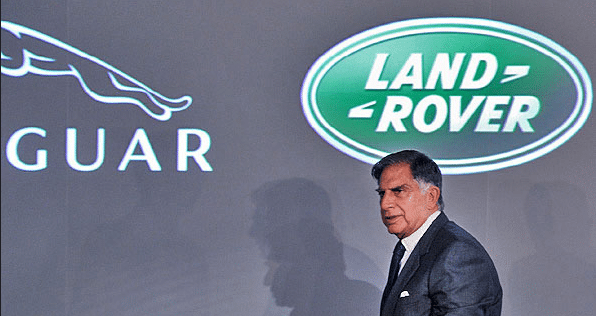
Le pays du web et des mobinautes
250 millions d’internautes, un chiffre en croissance de 14% depuis l’année dernière, 1110 millions de membres sur Facebook, 95% des possesseurs de smartphone s’en servent pour les réseaux sociaux, 43% pour préparer leurs voyages et 39% ont déjà fait un achat sur leur smartphone et 74% de ces derniers font au moins un achat par mois depuis leur terminal mobile. Bref, les Indiens sont prêts, mieux même sur de nombreux aspects que les Français, le réseau est partout très bon notamment, à utiliser l’internet et notamment mobile pour utiliser des services comme BlaBlaCar de ce point de vue.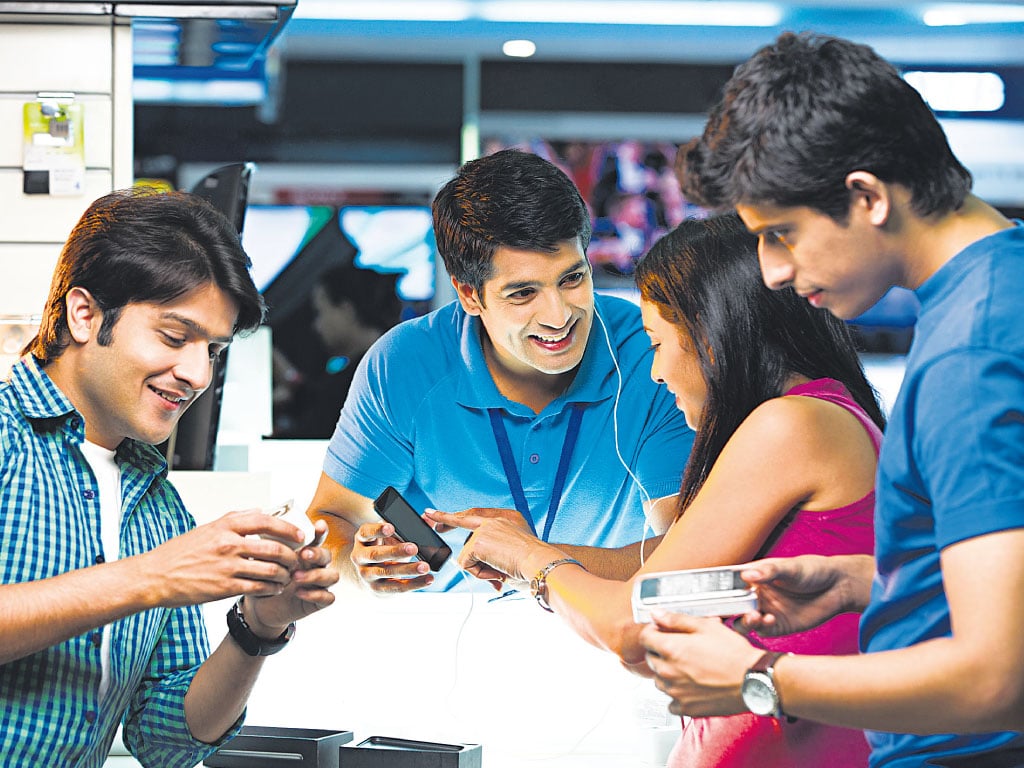
Un pays du covoiturage à la Blablacar ?
Le seul enjeu donc est de savoir si le covoiturage et plus particulièrement le covoiturage “à la Blablacar” avec des trajets de 100/400km est pertinent pour les Indiens ?
RedBus, 1er concurrent de Blablacar en Inde comme la SNCF est le 1er concurrent en France
En effet, ici, contrairement à la France, le train n’est pas cher mais certes de moindre qualité et le principal concurrent pourrait être le bus ! En effet, il y a des bus abordables et de très bonne qualité et une startup comme redBus pour réserver ces bus 5 étoiles (climatisés, avec couchette, prise électrique etc.) a le vent en poupe et multiplie les pubs vidéo sur YouTube notamment. Impossible de ne pas entendre parler de RedBus. La startup a été fondée en 2005, a été rachetée par le groupe Ibibo(Naspers) pour 138 Millions$. C’est la première plateforme de réservation de bus en Inde avec aucun frais de réservation, plus de 1500 compagnies de bus référencées et jusqu’à 80 000 trajets déservis et près de 2 millions d’utilisateurs actifs. Après, on peut penser que même si avec les offres de bus couchette, Redbus aura le leadership sur des trajets de 9/12h qui sont évidemment beaucoup plus communs qu’en France, Blablacar a une grosse carte à jouer sur les trajets de 3/4h heures et notamment auprès des classes moyennes. Pour exemple, il faut que 2h30 pour rallier Chennai à Vellore, autre ville importanteà proximité.
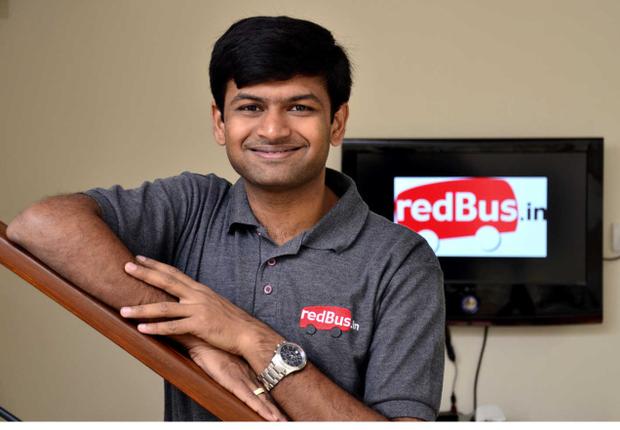
Beaucoup de migrations internes et beaucoup de retours réguliers pour revoir la famille
Une des choses qui m’a le plus surpris en vivant et travaillant en Inde, c’est le nombre de migrants internes. Alors qu’avec l’importance de la famille et les différences culturelles et linguistiques entre Etats, on aurait pu croire les migrations internes difficiles, au contraire, elles sont nombreuses et semblent évidentes aux Indiens qui n’hésitent pas ainsi à aller faire ses études ou à travailler à l’autre bout du pays. Par conséquent, beaucoup rentrent très régulièrement voir leur famille, parfois tous les week end, cela parait donc une cible à privilégier pour Blablacar.
Principaux obstacles ? La peur du vol, de l’insécurité.
Kabilan, un membre de mon équipe à qui je parlais de covoiturage du fait qu’il venait d’un autre Etat et rentrait régulièrement voir sa famille me disait que sa première crainte serait le vol de sa voiture et pour les filles notamment l’insécurité. Du coup, lui, s’il doit prendre sa voiture, pourra plus facilement faire passer le message à ses amis sur facebook, skype ou Whatsapp. L’avantage de Blablacar c’est que l’entreprise a déjà su affronter ce genre de problématique et que sa force réside notamment en sa capacité à rassurer ses membres et à construire de la confiance entre eux.

Des acteurs du covoiturage déjà en place ?
J’ai identifié plusieurs acteurs du covoiturage en Inde : Ridingo.com, PoolCircle.com, RideIT.in, PoolMyCar.in, Zify.com. La plupart de ces acteurs sont uniquement sur le covoiturage domicile-travail et ne sont donc pas vraiment des concurrents de Blablacar, cependant, j’ai interviewé les présidents de 3 de ces startups pour connaitre leur avis sur l’arrivée de Blablacar en Inde (voir en annexe).
Si l’on résume l’Inde pour Blablacar :
– Des freins culturels (méconnaissance, peur de l’insécurité etc.) mais que Blablacar a déjà su surmonter par ailleurs.
– Pas de concurrence directe d’autre acteur du covoiturage moyenne distance mais des acteurs sur le covoiturage courte distance, preuve qu’au moins, les Indiens peuvent ne pas être réticents à partager la voiture et qu’un segment en B2B est possible de la même manière que Blablacar à générer ses premier revenus en France. Pas forcément d’achat de startup locale à faire donc mais plutôt un country manager connaissant à la fois le style de covoiturage que veut importer Blablacar et les contraintes de l’Inde.
– Une concurrence indirecte des bus et des trains peu chers, peut-être inédite pour Blablacar, qui pourra ne pes forcément être si compétitif côté prix mais Blablacar peut malgré tout trouver son public.
– De nombreux développeurs de qualité dont Blablacar pourra aussi bénéficier pour pourquoi pas développer un centre de R&D spécifiques aux enjeux des pays émergents ou du mobile par exemple.
– L’Inde pourra aussi être une porte sur l’Asie avant d’aller sur des marchés aux caractéristiques similaires Vietnam (89M d’habitants, 39M d’internautes, 9% de croissance sur l’année, 117% taux équipement mobile), la Thaïlande (67M habitants, 31% pénétration smartphone), et les Philippines (100 M habitants, 39M d’internautes, 10% de croissance sur l’année, 80% taux pénétration mobile, 38,7% smartphone sur la population totale).
ANNEXES – INTERVIEWS EXCLUSIVES POUR STARTUPBRICS
DES PATRONS DE STARTUPS DU COVOITURAGES EN INDE A PROPOS DE BLABLACAR
Raghu Ramanujam, Founder & CEO, PoolCircle

 1- Can you introduce yourself and your startup? Why and how did you decided to create your very unique concept and what are your objectives?
1- Can you introduce yourself and your startup? Why and how did you decided to create your very unique concept and what are your objectives?
I have about 22 years of experience across Entrepreneurship, High tech product management and Mentoring. 12 of those managing products at ZOHO and InMobi, 2 of India’s most successful and respected product companies.
The spark to start a carpool network came, as to be expected, when I was stuck in a traffic jam in early 2013. This also led me to conduct a survey across one full week to determine that about 78% of the cars in Bangalore ride with just 1 person on a weekday commute. I believe technology should solve everyday challenges and improve the way we live and work. Not to mention the lower cost, reduced stress of driving alone and the environmental impact of putting 4 people into every car
2- How and why do you think car pooling is relevant in India?
There is a lot of opportunities for carpooling in India
1. Indians spend among the highest in the world on fuel as a percentage of their total available income. This presents a strong incentive for us to opt for carpooling from a cost perspective
2. The population density, and more importantly the vehicle density in India, is hugely focused on the big cities leading to significant pressure on the infrastructure which is clearly struggling to keep pace. The population in many of the big cities in India, including Bangalore have doubled or tripled in the last 12 to 15 years. The vehicle growth is around 4 to 5 times in this period due to rise of the Indian middle class. The roads have just not kept up
3. While the cars per 1000 persons in India is among the lowest in the world (at about 47), the sheer size of India’s population could make the opportunity huge
4. Enterprises are getting more conscious about their Sustainability and CSR practices and are becoming more open to promoting carpooling among their employees.
5. In our overall willingness to share I would consider the Indians closer to Western Europeans, rather than Americans – Ex: the wide spread success of public transport system – I mentioned W Europeans only because I dont know much about E Europeans, and its not a attempt to exclude them 🙂
6. In a survey that we did in Bangalore, we found that around 78% of the cars ride with just one person on a work day commute.
Still, there is a lot of challenges
1. Air, train and bus still remain the preferred means of transport for inter-city commutes. Traditionally, this is largely due to poor national highways in the country. While this has improved in the recent years, average distance covered would still remain in the region of around 50 km / hr over the distance.
2. A car, for many Indians, is still a very personal space and that could pose some challenges in openness to sharing it for a ride.
3. Trust and safety are again significant factors to be considered. Considering India is a (fast) Developing country with a huge population, Law Enforcement standards may not be as robust as you might find in Western Europe
4. Last km-issues (we dont use mile 🙂 logistics / coordination issues could be big due to not-so-organized traffic. Indian standards of punctuality are also slightly different from that of some of the W European countries
5. Big cities in India tend to be comparatively smaller in size and more dense in population, than say somewhere in the California Bay Area. This means that the average daily commute distances in India is less – around 15 km per day one way to work.
As far as the question on buying a startup here, it would depend on what Blablacar expects from that acquisition. If it is existing user base that they expect to take over, I don’t think any carpool network in India currently has a huge user base. If it is technology or team that they want to acquire, it would be subjective to what they are looking for.
Anurag S. Rathor, Co-Founder & CEO, Zify
1- Can you introduce yourself and your startup? Why and how did you decided to create your very unique concept and what are your objectives?
I am Anurag S. Rathor, founder & CEO of Zify which is a Hyderabad based startup. Zify is a mobile & web powered dynamic ride-sharing service. It’s a platform connecting car-owners and passengers to facilitate carpooling & Ride-Sharing in a fun & secured way.
Prior to founding Zify, I worked with Wells Fargo as a Technology Specialist and had to commute almost 20 KMs to office and back home on a daily basis. No doubt the traffic and the chaos was bad, but what bothered me was most of the cars on the roads were occupied by just 1 person, almost 90% of the cars!
And on the other hand, the public transport options like buses were over-crowded. Our objective is to introduce an alternate mode of daily commute which is comfortable and also affordable with the vision of creating a self-sustaining ride-sharing travel ecosystem which incentivizes both the stake-holders, i.e. the car-owners as well as the folks looking for a ride.
2- How and why do you think car pooling is relevant in India?
Of course carpooling is relevant in India. The rise in the number of vehicles, shrinking road space coupled with the rise in urban population, people are actively looking at alternate mode of transportation for their daily commute which is affordable and also comfortable.
The para-transit mode of transportation which include buses, taxis and auto-rickshaws is decreasing rapidly. Out of 1.2 Billion total Indian population, the current urban population stands at roughly 400 + million in the metros and selected Tier-II cities owning almost 100 million vehicles.
This number is pegged to increase upto 450+ million by 2020. It’s high time that we think of alternate mode of transportations. Not just that, culturally also people are opening up to the sharing economy.
The success stories of AirBnB and other companies is a testament to the fact that the India consumer is opening up from being a conservative lot to a sharing economy. And it’s already happening at a large scale but is highly unorganized.
3- which kind of car pooling is the most promising in India ? (Home to office daily? city of work to city of origin weekly? Short distance? 2/3 hours distance ? 100km? Personal? Corporate? Who may be the targets ? What positioning would match their needs?
While there is need for various kinds of carpooling, but the majority of the market concentration would be in the home to office and back home. This covers mostly the corporate segment. The inter-city travel generally involves the whole family or friends, and is mostly carried out as a leisure activity or a vacation trip. And rarely there are people who take up inter-city travel for work.
4- What are the main constraints and challenges for carpolling in India?
There are various challenges like security, government regulations and the unorganized segmentation of public transportation. For creating a successful ride-sharing community, one needs to solve all the above. And while doing this, it’s also important to maintain the right balance between car-owners and passengers. Carpooling is of the most appropriate examples of the classic chicken-egg problem.
Vardhan Koshal, CoFounder & CEO of Ridingo

1- Can you introduce yourself and your startup? Why and how did you decided to create your very unique concept and what are your objectives?
What is Ridingo? With more than 10 Lac private cars on roads of Bangalore, and 30 minutes of average wait time on road, car-pooling looks like a perfect solution to increase the efficiency of current transport system.
Every shared Car Seat has the potential to reduce consumption of 300+ liters of Fuel/Yr and reduce production of CO2 by over 250 Kg/Yr.
But traditional car-pooling has failed multiple times to gain a sustainable acceptance. On the basis of an exhaustive survey, we found out that there are three major issues associated:
- Coordination is hard and inconvenient, even if pooling with close friends
- Safety is a concern while using online forums to get carpool partners
- Unsustainable for car owners if not compensated for their fuel expense
Ridingo helps people share empty seats inside their car while commuting between home and office. Using web application, we help people find other trustable people on their route dynamically and contribute to the fuel cost online.
Our initiative has been supported by Bangalore Traffic Police (BTP) and Electronics City Industry Association (ELCIA)
We have few similar startups trying to make a break-through, but none has made a mark.
How it started?
I shifted to Bangalore from Mumbai in 2011. The Auto-rickshaw culture of asking Rs 20 above the fare calculated by the meter was a surprise compared to Mumbai where all you have to do is sit inside the Auto and then tell the Auto driver to take you to the desired area. Pre ride fare discussion was a rarity.
When travelling in overpriced Auto, I looked around at those private cars suffocating the roads, and all I could notice was those empty seats inside them, probably going to the same place as me.
There has to be a way to fill those seats, I thought. But it was just a hazy idea in mind, which took robust shape when I attended one of the Startup Weekend event in Bangalore in Sept 2012 and met Srivatsan, my co-founder and technology expert. We won in the competition and decided to work together after the event.
3- How and why do you think car pooling is relevant in India ?
The average speed of traffic in Bangalore goes as low as 15 Km/ Hr for public vehicles. On busy routes, it takes approximately 1 Hr to cross 10-12 KMs of distance. The situation is similar in other big cities like Delhi, Mumbai etc..
The pollution levels are all time high and its a risk for people to travel on 2 wheelers, which ironically are theprimary causeof that pollution.If we can club those 4 vehicles into 1, and make it socially and economically possible, it would be a great feat.
4- which kind of car pooling is the most promising in India ? (Home to office daily? city of work to city of origin weekly? Short distance? 2/3 hours distance ? 100km? Personal? Corporate? Who may be the targets ? What positioning would match their needs?
The Inter-city travel is well served by private and public buses, apart from Railways. If people are taking their car, most probably that would be because they are travelling with friends or family, hence sharing is not possible.
The cost of fuel makes it an unattractive option for people to ride vehicle when they are driving alone, and for similar reason, its unattractive for someone who is looking for a ride. The shared cost will still not beat Buses and Railways fares by an encouraging margin. Hence Blablacar might not find its use in India, where Trains and Buses are still very cheap.
To the best of our understanding, its only daily office commute of average 15KMs distance that makes sense. The ideal customer would be a salaried employee who earns anywhere between Rs 25,000 to Rs70,000 per month. He would have a car, or would want to travel in a car, and is still worried about the cost of fuel.
Positioning would be that of a cost saving and comfortable way to move around
5- what are the main constraints and challenges for carpoolling in India?
Traditional car-pooling has failed multiple times to gain a sustainable acceptance. On the basis of an exhaustive survey, we found out that there are three major issues associated:
- Coordination is hard and inconvenient, even if pooling with close friends
- Safety is a concern while using online forums to get carpool partners
- Unsustainable for car owners if not compensated for their fuel expense
Ridingo helps people share empty seats inside their car while commuting between home and office. Using web application, we help people find other trustable people on their route dynamically and contribute to the fuel cost online.
 StartupBRICS Le Blog "Tank" des startups et de l'innovation dans les pays émergents
StartupBRICS Le Blog "Tank" des startups et de l'innovation dans les pays émergents
